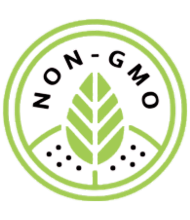Featured Collection
Featured Collection
Shop our most popular Herbs
Our Price: $9.50



 Culinary
Culinary Medicinal
MedicinalCalendula, also known as a marigold, offers many benefits beyond its vibrant appearance. Whether you're an avid gardener, herbal enthusiast, or someone looking to enhance your wellness routine, a calendula plant offers a pop of color and various practical uses in your home.
Discover the beauty and benefits of calendula, a cherished herb renowned for its rich and colorful blooms and a long list of benefits. Shop at The Grower’s Exchange today and have a healthy calendula plant shipped safely to your doorstep.
Known scientifically as Calendula officinalis, this herbaceous plant has enchanted herbalists and gardeners for centuries. The name "Calendula" is derived from the Latin word "calendae," meaning "little calendar," as it was believed to bloom on the first day of each month.
Calendula's history dates back to ancient times when it was revered by cultures such as the Egyptians, Greeks, and Romans. Early civilizations such as the Greeks and Romans cultivated calendula for its medicinal properties. It has been traditionally used in herbal remedies for its anti-inflammatory, antiseptic, and healing properties, particularly for healing wounds and soothing skin ailments. The Egyptians included it in rituals and adornments, as its golden petals symbolized vitality and were often offered as tributes in ceremonies, reflecting its revered status.
Calendula plants are characterized by their bright, daisy-like flowers in shades of yellow and orange. These sunny blossoms bloom from spring to summer, adding cheer to any garden and attracting beneficial pollinators like bees and butterflies. The plant grows to about 18 to 24 inches, with slender, slightly hairy leaves that are aromatic when crushed.
Beyond its ornamental value, calendula is prized for its medicinal and culinary uses. Its antiseptic and antifungal properties make it a popular ingredient in herbal medicine creams, ointments, and salves. It’s also believed to have gentle anti-inflammation properties, making it popular in bath and beauty products. Calendula petals can be used in teas or tinctures for digestive health, stomach pain, and immune support.
Many people add calendula plants to their gardens for its many benefits:
Medicinal Properties: It is a staple in skin care products, alleviating minor burns, cuts, rashes, and insect bites. Its anti-inflammatory and antiseptic qualities aid in promoting faster wound healing.
Herbal Remedies: Calendula is used in herbal teas and tinctures to support digestive health, easing stomach discomfort and promoting healthy digestion. Its immune-stimulating properties can help bolster the body's natural defenses, making it a valuable herb during cold and flu season.
Culinary Uses: Calendula petals add a splash of color and subtle tangy flavor to salads, soups, and even desserts. They can be used fresh or dried for a culinary twist.
Pollinator Attraction: Calendula's bright blooms attract pollinators like bees and butterflies, supporting biodiversity in your garden ecosystem.
Aesthetics: Calendula's cheerful flowers, beyond their practical uses, bring vibrant hues of yellow and orange to gardens, window boxes, and container plantings, enhancing any outdoor space.
Easy to Grow: Calendula is low-maintenance and thrives in sunny to partially sunny locations with well-drained soil. It is perfect for beginners and seasoned gardeners alike.
Calendula is an easy plant to grow, making it an ideal choice for novice and experienced gardeners who want to add color to their garden during spring and summer. Here are some tips for cultivating and maintaining a healthy calendula plant:
Location: Calendula plants thrive in full or partial exposure. Since they are annual flowers, they thrive best in areas with moderate temperatures. They can tolerate cooler temperatures, but hotter climates can cause the plant to reduce flower production or stop blooming altogether.
Sowing: Directly sow seeds outdoors after the last frost date, or start seeds indoors six to eight weeks before the last frost. Calendulas must be planted in well-draining soil, as their roots are vulnerable to root rot if the soil is too wet or thick.
Watering: Keep the soil evenly moist but not waterlogged. Your starter plant will need regular watering. However, once you’ve repotted it into its new home, you can reduce the watering to only occasionally.
Deadheading: We recommend regular deadheading, which involves removing dead and damaged flowers as needed. This encourages continuous blooming, promotes airflow, and reduces the risk of developing powdery mildew.
Pests and Diseases: Calendula is generally resistant to pests and diseases, especially in suitable, well-draining soil. However, watch out for aphids and powdery mildew.
The Growers Exchange offers high-quality calendula plants that are organically grown and nurtured for optimal health. Whether you're adding calendula for medicinal and culinary uses or want to add color to your foliage, our Calendula plants are perfect for your garden.
Bring the beauty and benefits of calendula into your life with The Growers Exchange!
 |
To make a healing calendula infusion:
|